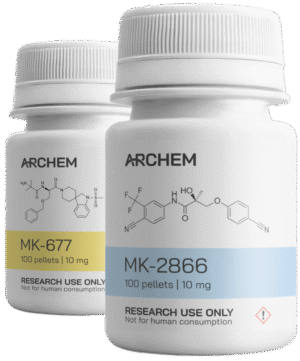The story of how anabolic steroids were first created is a fascinating chapter in pharmacological history. From early hormone experiments in the 19th century to the development of synthetic testosterone in the 1930s, scientists paved the way for powerful muscle-building drugs.
Decades later, the emergence of modern SARMs steroids (selective androgen receptor modulators) offers a new twist, aiming to deliver anabolic benefits with fewer side effects. This article explores the historical origins of anabolic steroids, their initial medical uses, limitations and side effects, and how those challenges led researchers to develop SARMs as a safer alternative.
Historical Background of Anabolic Steroids (1940s–1960s)
The concept of enhancing the body with hormone extracts dates back to the 19th century. In 1889, endocrinologist Charles-Édouard Brown-Séquard famously injected himself with extracts of animal testes, claiming rejuvenating effects. While this “Brown-Séquard elixir” was likely a placebo, it sparked curiosity about harnessing the male hormone’s anabolic effects.
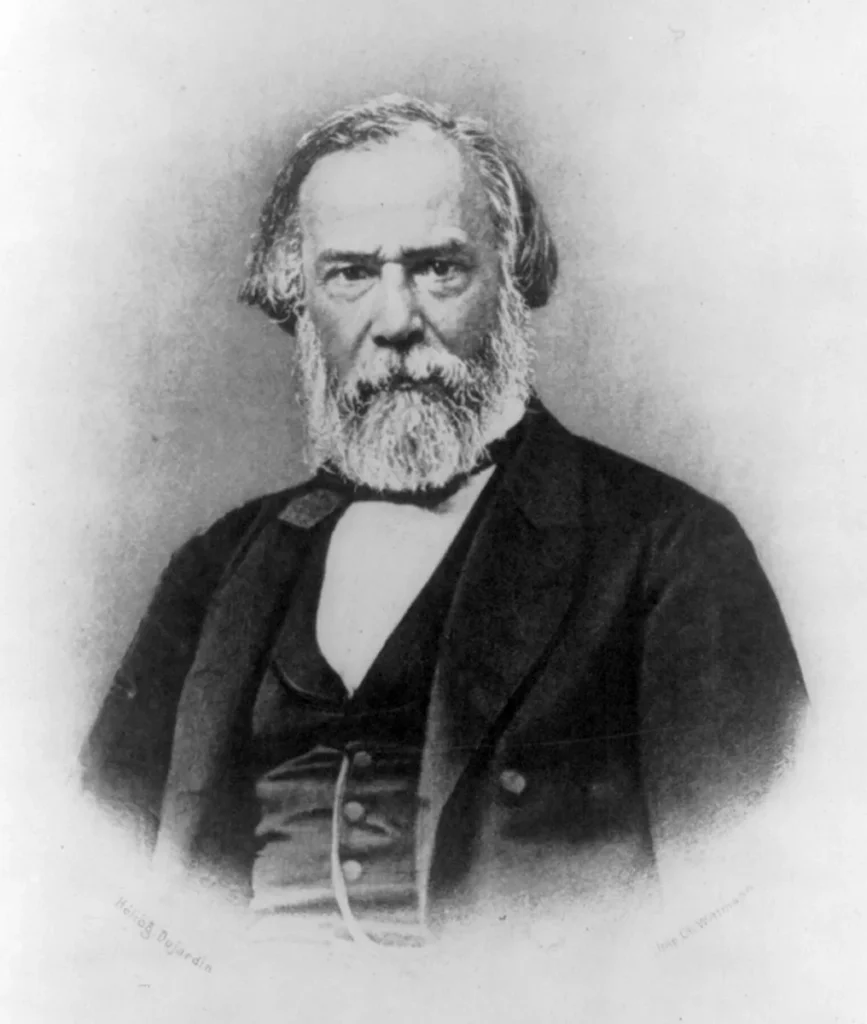
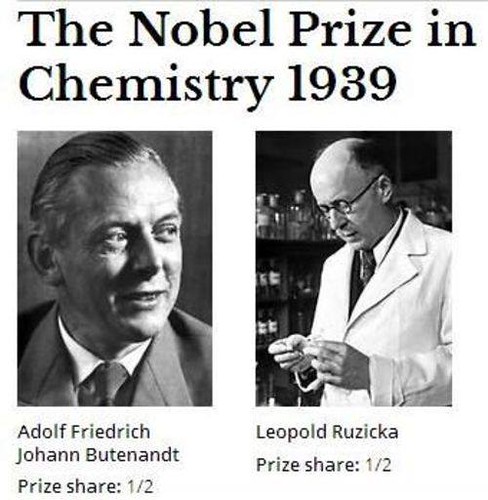
It wasn’t until the 1930s that the key hormone was identified and synthesized. In 1935, chemists Adolf Butenandt and Leopold Ruzicka independently isolated and synthesized testosterone, the primary male hormone. They even earned the 1939 Nobel Prize in Chemistry for this breakthrough. By 1937, early clinical trials with synthetic testosterone (injections of testosterone propionate and oral methyltestosterone) were underway.
During the 1940s, world events accelerated anabolic steroid research. There are unproven rumors that Nazi Germany experimented with testosterone to increase soldiers’ aggression. What is well documented is that by the late 1940s and early 1950s, athletes and bodybuilders had discovered these testosterone derivatives. Dr. John Z. Boje in 1939 was the first to suggest that taking exogenous testosterone might enhance athletic performance.
Soon after, some pioneering weightlifters on the U.S. West Coast began experimenting with testosterone shots in the late 1940s. The first dramatic public reveal of anabolic steroid use in sports came at the 1954 World Weightlifting Championships, when the Soviet team’s superior strength was attributed to testosterone use. In response, American physician Dr. John Bosley Ziegler worked with chemists to create a better anabolic drug with fewer side effects.
This led to the development of methandrostenolone (Dianabol) in 1958, one of the first purely anabolic steroids marketed for muscle growth. Pharmaceutical company Ciba introduced Dianabol, approved by the FDA in 1958, initially for therapeutic use in debilitated patients.
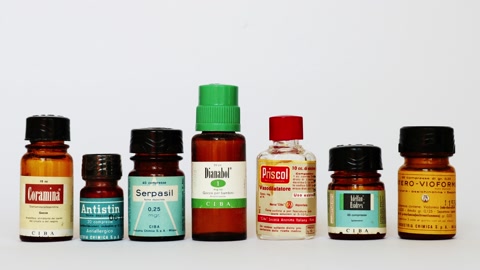
By the 1960s, anabolic steroids had entered both medicine and sports. Athletes in strength-intensive events widely adopted steroids like Dianabol and testosterone derivatives to gain a competitive edge. This era is often referred to as the “steroid era” in sports history. Recognizing the growing misuse, the International Olympic Committee (IOC) added anabolic steroids to its list of banned substances in the late 1960s (formally by 1976, with testing introduced).
Nonetheless, the groundwork had been laid: the first anabolic steroids were created in mid-century, transforming both performance enhancement and hormone therapy for decades to come.
Intended Medical Uses of the First Anabolic Steroids
It’s important to remember that these early anabolic steroids were developed for medical use, not just athletics. The original goal was to treat patients with inadequate natural hormones and muscle-wasting conditions. In fact, anabolic steroids were developed in the late 1930s primarily to treat hypogonadism, a condition in which the testes do not produce enough testosterone.
By replacing or supplementing testosterone, doctors aimed to induce normal male development and improve health. Early on, synthetic testosterone (and its oral analogs) was used to stimulate puberty in adolescent boys with delayed development and to treat certain types of impotence or fertility issues in men. These testosterone derivatives showed marked anabolic effects, meaning they helped build up tissue mass and strength, which had clear therapeutic value.
Medical experimentation in the 1940s and 1950s revealed more uses for anabolic steroids. Clinicians found that high-protein diets plus steroid therapy could help patients regain weight and muscle after severe trauma. Anabolic steroids were soon used to promote healing in patients recovering from major burns, trauma, or surgery, where severe weight loss and muscle catabolism occur.

For example, Methandrostenolone (Dianabol) was prescribed in burn units to help victims rebuild lost muscle, and given to frail elderly patients to improve their strength. Doctors also tried anabolic steroids in patients with chronic debilitating illnesses. By the 1960s, these drugs were experimented with in treating anemia (by stimulating red blood cell production) and osteoporosis (to increase bone density). Early research hinted at benefits in aging-related sarcopenia (muscle wasting in the elderly) and severe chronic diseases – decades later, testosterone analogs would even be used for HIV/AIDS cachexia and cancer-related wasting.
Some therapeutic applications of the first anabolic steroids included:
- Hormone Replacement: Treating hypogonadism (testosterone deficiency) in men and inducing puberty in boys with delayed puberty. This improved muscle mass, bone growth, and secondary sexual characteristics in patients who lacked them.
- Severe Weight Loss: Helping rebuild body mass after major surgery, burns, or trauma, where patients often suffered muscle loss. High-dose anabolic steroid therapy after such injuries was reported to aid muscle protein synthesis and recovery.
- Chronic Wasting Diseases: Early trials used steroids to counteract muscle wasting in conditions like advanced cancer or, later on, HIV/AIDS. The anabolic steroids helped stimulate appetite, weight gain, and protein buildup in these patients.
- Bone and Blood Disorders: Treating osteoporosis in postmenopausal women and anemia in bone marrow disorders. Anabolic steroids can stimulate bone formation and red blood cell production, providing symptomatic relief in some cases.
- Other Uses: In the 1960s, androgens were even tried in certain breast cancer cases in women (before modern therapies existed) to slow tumor growth, and in disorders like Turner’s syndrome to promote growth. Testosterone therapy was known to improve libido and physical function in aging men as well.
Early medical reports were optimistic. Patients receiving anabolic steroids showed increased nitrogen retention (a marker of protein synthesis) and weight gain, indicating true muscle growth. For example, a 1950 study by Dr. Charles Kochakian demonstrated that testosterone injections created a strong positive nitrogen balance in castrated animals, proving its tissue-building power.
Many physicians in the 1950s noted improved recovery and convalescence in their patients on steroids. These initial successes established anabolic steroids as legitimate hormone therapy tools in medicine. Doctors could, for the first time, significantly enhance muscle growth and recovery in patients who desperately needed it – a therapeutic breakthrough beyond traditional nutrition and rest.
Limitations and Side Effects of Early Anabolic Steroids
Despite their benefits, the first generation of anabolic steroids came with significant limitations and side effects. Researchers and clinicians quickly learned that these synthetic hormones were a double-edged sword. The same mechanisms that increased muscle and bone could also disrupt other body systems. Some common adverse effects observed with early anabolic steroid use included:
- Androgenic Side Effects: Because these drugs are testosterone analogs, they can cause excess male-sex-hormone effects (androgenic effects). Early steroid users experienced acne, oily skin, and accelerated hair loss (male-pattern baldness) due to overstimulation of skin glands and hair follicles. Men often noticed testicular atrophy (shrinking testes) and reduced fertility because external steroids suppress the body’s own testosterone production. Dr. John Ziegler himself observed in the 1960s that athletes taking Dianabol developed enlarged prostate glands and shrunken testicles – clear signs of hormonal imbalance. Women who took these potent steroids faced virilization, developing male characteristics like deeper voice, facial hair, and menstrual irregularities.
- Estrogenic Side Effects: Anabolic steroids derived from testosterone can be converted by the body into estrogen. This led to gynecomastia (breast tissue growth in men) and water retention in some early users. Adolescent users risked stunted growth, as steroid use could prematurely close growth plates. These unintended hormonal effects highlighted the lack of selectivity in first-generation steroids – they stimulated many tissues, not just muscle.
- Liver Toxicity: Orally active anabolic steroids (like methyltestosterone and Dianabol) were 17α-alkylated to survive digestion, a modification that unfortunately is harsh on the liver. By the 1960s, doctors began seeing signs of liver damage in patients on long-term high-dose orals. Cases of cholestatic jaundice (bile flow blockage) and benign liver tumors were linked to steroid use. Anabolic steroid abuse has been associated with serious liver issues, including hepatic tumors and peliosis hepatis (blood-filled cysts in the liver). This toxicity became a major medical concern and is one reason many early steroids were restricted to short-term use.
- Cardiovascular Strain: Heavy steroid use was soon tied to heart and blood vessel risks. Steroids can adversely affect cholesterol levels (lowering “good” HDL, raising “bad” LDL) and increase blood pressure. Over time, this contributes to atherosclerosis, raising the risk of heart attacks and strokes. Indeed, anabolic steroid abuse has been linked to premature heart attacks and cardiomyopathy (heart muscle disease) in otherwise healthy young men. These outcomes might not have been immediately obvious in the 1960s, but retrospective analyses identified cardiovascular dangers as a critical limitation of steroid therapy.
- Psychological Effects: Some early reports and anecdotal observations noted mood changes with steroid use. High doses of anabolic steroids were associated with increased aggression, irritability, and even psychiatric symptoms in certain individuals (“roid rage”). While not everyone experienced severe mood swings, this was another problematic side effect that made long-term steroid use controversial.
- Other Side Effects: Additional issues included kidney strain (steroids can reduce kidney function over time) and immune system changes. Many of these adverse effects were dose-dependent – they became more common as athletes took far higher doses than those prescribed medically. By the late 1960s, it was clear that anabolic steroids were not a risk-free panacea; they had a narrow therapeutic index and significant potential for harm when misused.
These limitations became problematic for both patients and athletes. Medically, side effects like liver damage and masculinizing effects in women limited how aggressively doctors could prescribe steroids for chronic conditions. In sports, the health risks and ethical issues prompted officials to ban steroids, as mentioned earlier.
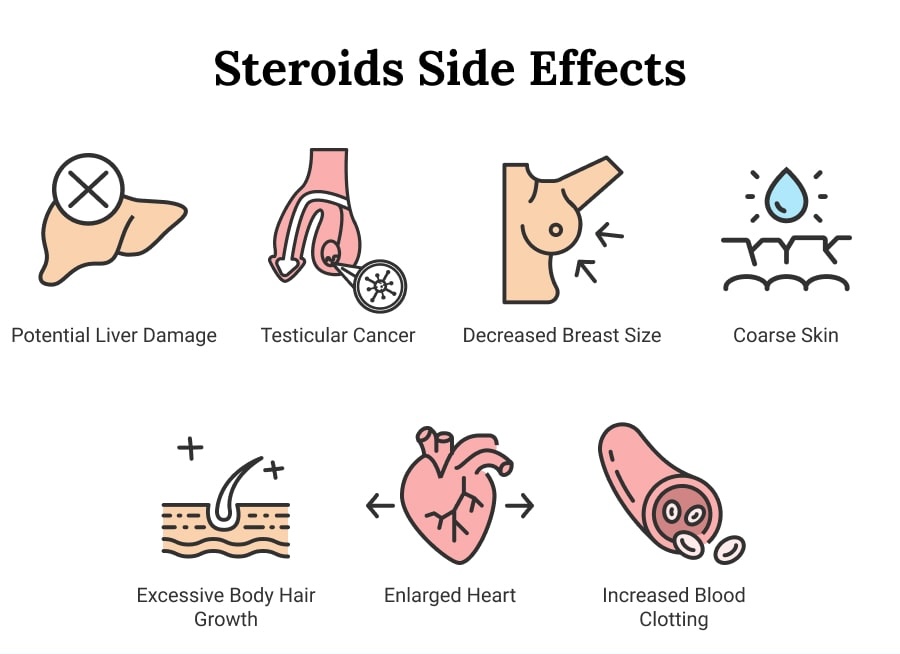
Crucially, the fundamental drawback of early anabolic steroids was the inability to separate their anabolic (tissue-building) properties from their androgenic (masculinizing) properties. Scientists recognized as early as the 1940s that an ideal “anabolic” drug would build muscle without causing male sex trait development. Attempts to modify the chemical structure (such as the 1950s creation of norethandrolone, a steroid with 1/16th the androgenic potency of testosterone) achieved only partial success.
No matter how chemists tweaked the steroid molecule, a truly selective anabolic agent remained elusive – synthetic hormones would always influence multiple tissues. This realization directly paved the way for a new approach: designing molecules that could target the androgen receptor more selectively. In other words, the shortcomings of anabolic steroids set the stage for the development of SARMs.
Transition from Anabolic Steroids to SARMs
By the late 20th century, researchers began exploring a revolutionary idea: Selective Androgen Receptor Modulators (SARMs). Rather than using the steroid framework, scientists looked for new compounds that could activate the androgen receptor (AR) in muscle and bone but not in other tissues like the skin, prostate, or liver.
The goal was to uncouple the desirable anabolic effects from the undesirable side effects seen with anabolic steroids. The concept was inspired in part by the success of selective modulators in other hormone systems (for example, Selective Estrogen Receptor Modulators in breast cancer therapy). If estrogens could be selectively blocked or activated in certain tissues, why not androgens?
So what are SARMs? These are a class of therapeutic compounds (often non-steroidal molecules) that have similar muscle-building properties to anabolic steroids, but with greatly reduced androgenic properties. In simple terms, a SARM can stimulate the androgen receptors in some parts of the body and not others.
For example, a well-designed SARM might strongly activate receptors in skeletal muscle and bone (promoting muscle growth and bone density), while barely activating receptors in the prostate or sebaceous glands (thus avoiding prostate enlargement and acne). Unlike anabolic steroids, which flood the entire body and bind to AR in many tissues indiscriminately, individual SARMs selectively bind androgen receptors in specific tissues and trigger only the targeted signals.
By the 1990s, pharmaceutical research had identified prototype SARMs that could be administered orally and had tissue-selective effects. These were often non-steroidal in structure (not based on the four-ring steroid nucleus of cholesterol). The absence of the steroid ring meant the compounds could not be easily converted by enzymes into estrogen or dihydrotestosterone, which is why SARMs supplements were expected to have fewer estrogenic or DHT-related side effects.
Early SARMs like ostarine (MK-2866) and anabolic agents S-4 (andarine) showed in animal studies that they increased muscle mass and bone strength without significantly enlarging the prostate – a breakthrough in achieving a high anabolic-to-androgenic ratio. Researchers shifted focus to SARMs because of this comparative insight:
- Tissue Selectivity: SARMs are selective by design. Steroids bind to androgen receptors everywhere (muscle, prostate, liver, hair follicles, etc.), whereas SARMs preferentially bind receptors in muscle and bone. This selectivity can be engineered by tweaking the molecule so that it acts as an agonist(activator) in some tissues but only a weak agonist or antagonist in others. The result is muscle growth without widespread hormonal disturbance.
- Chemical Structure Differences: Classic anabolic steroids are all derivatives of the testosterone molecule (or closely related synthetic hormones). SARMs, on the other hand, are non-steroidal molecules (often small organic molecules) that are unrelated to the structure of cholesterol. Because of this, the body does not recognize SARMs as “testosterone” in the usual metabolic pathways. For instance, SARMs do not get converted by aromatase into estrogen, nor by 5-alpha reductase into dihydrotestosterone. This means SARMs largely avoid side effects like water retention, gynecomastia, or prostate hypertrophy that plague steroid use. Additionally, many SARMs are designed to be oral medications that are not liver-toxic, bypassing the need for the liver-damaging alkylation used in oral steroids.
- Androgenic vs Anabolic Ratio: Researchers measure an anabolic agent’s effectiveness by its anabolic-androgenic ratio (how much muscle-building vs how much virilizing effect it has). The first anabolic steroids had ratios not far from 1:1 – basically they were as androgenic as they were anabolic (testosterone itself has a ratio of 1). SARMs were developed to have ratios that heavily favor anabolic activity (10:1 or greater in some cases). In practical terms, SARMs vs anabolic steroids became an appealing comparison: SARMs could potentially offer the muscle and bone benefits of steroids with minimal impact on secondary sexual tissues. This was seen as the holy grail for treating muscle-wasting diseases safely.
Thanks to these advantages, by the early 2000s multiple SARMs entered clinical trials for conditions like osteoporosis, cachexia (wasting syndromes), and age-related muscle loss. Researchers had effectively shifted focus from tweaking steroid hormones to creating entirely new modulators of the androgen receptor.
It’s worth noting that while they are sometimes colloquially called “SARMs steroids,” SARMs are not actually steroids – they are selective receptor ligands. This marks a fundamental shift in approach: from hormones to receptor modulators. As a result, the late 20th century saw a transition in the field of pharmacological history – the baton passing from anabolic steroids to SARMs for the next generation of performance enhancement and therapeutics.
Are SARMs a Safer Alternative to Steroids?
The appeal of selective androgen receptor modulators (SARMs) comes from their potential to offer muscle-building benefits similar to traditional anabolic steroids, but with significantly reduced side effects. Unlike steroids, which broadly affect multiple tissues, SARMs specifically target androgen receptors in muscle and bone, reducing unwanted impacts on the prostate, skin, and liver. Early clinical trials have demonstrated promising results, with SARMs like Ostarine effectively increasing muscle mass and strength while causing minimal prostate enlargement or serious liver stress.
However, SARMs are not completely without risks. Reported SARMs side effects include mild suppression of natural testosterone production, mood swings, and in some cases, minor liver strain, particularly at higher doses. Because SARMs are still relatively new and remain investigational, comprehensive data on their long-term safety is lacking.
In short, SARMs do appear safer and more targeted than anabolic steroids, but they should not be considered entirely risk-free. Ongoing research and cautious medical supervision remain essential to fully understand their safety profile and therapeutic potential.
FAQs
What are SARMs and how do they differ from steroids?
Selective androgen receptor modulators (SARMs) are synthetic compounds designed to replicate the muscle-building effects of anabolic steroids, with fewer harmful side effects. Unlike traditional steroids, SARMs specifically target androgen receptors in muscle and bone, minimizing unwanted effects in other tissues such as the prostate and liver.
Are SARMs safe compared to anabolic steroids?
SARMs are generally considered safer than anabolic steroids, as they produce fewer severe side effects like liver toxicity, prostate enlargement, or significant hormonal imbalance. However, SARMs still carry risks, such as mild testosterone suppression, mood changes, and potential liver strain at higher doses. Comprehensive long-term safety data is still lacking, so caution and medical oversight are advised.
Conclusion
While SARMs show great promise and may indeed be the future of muscle-wasting treatments, ongoing research will determine if they can truly fulfill that promise without serious trade-offs. For now, anyone considering a SARMs supplement or anabolic steroid should be aware of the potential risks and the legal implications. Both substances are banned in sports and unapproved for general use, reflecting caution from the scientific and regulatory community.
The story of anabolic steroids – from their first creation to the rise of SARMs – is a testament to scientific innovation driven by the quest for performance enhancement and better therapies. As research continues, we invite readers to explore other SARMs-related articles to stay informed about the latest developments in this exciting field, from new SARM compounds in development to deeper dives on their mechanisms and uses. The journey from the first anabolic steroid to the cutting-edge SARM is still unfolding, and staying educated is key to understanding where we go from here.
References
- Alsamani, A. I., Jain, S., & Mir, T. (2023). Association of Anabolic Steroid Use With Hypertension and Cardiomyopathy: A Case Study. PMC. Retrieved from https://pmc.ncbi.nlm.nih.gov/articles/PMC11570439/
- Wikipedia contributors. (2023). Anabolic Steroid. Wikipedia. Retrieved from https://en.wikipedia.org/wiki/Anabolic_steroid
- Hoffman, J. R., & Ratamess, N. A. (2006). Medical Issues Associated with Anabolic Steroid Use: Are They Exaggerated? ResearchGate. Retrieved from https://www.researchgate.net/publication/258825816_Medical_Issues_Associated_with_Anabolic_Steroid_Use_Are_They_Exaggerated
- National Institute on Drug Abuse (NIDA). (2006). Research Report Series: Anabolic Steroid Abuse. Retrieved from https://nida.nih.gov/sites/default/files/rrsteroids_0.pdf
- U.S. Anti-Doping Agency (USADA). (2024). Selective Androgen Receptor Modulators (SARMs): A Prohibited Class of Anabolic Agents. Retrieved from https://www.usada.org/spirit-of-sport/selective-androgen-receptor-modulators-sarms-prohibited-class-anabolic-agents/
- Van Wagoner, R. M., Eichner, A., & Bhasin, S. (2022). Adverse effects and potential benefits among selective androgen receptor modulators users: a cross-sectional survey. International Journal of Impotence Research.Retrieved from https://www.nature.com/articles/s41443-021-00465-0
- GoodRx Health. (2023). What Are SARMs? Retrieved from https://www.goodrx.com/well-being/movement-exercise/what-are-sarms
About the author

Emiliano Ventura, PhD, Pharm.D.
Senior Scientist MetID & LC-MS
🧑🔬 Senior Scientist | 🧪 Bioanalytical Methods (LC-MS/MS) | 🔍 MetID (HRMS, Radiodetection) | 💊 Small Molecules 🧱 Peptides 🧬 Oligonucleotides | 🚴 Anti-Doping | 🌍 Life Sciences | 🌟 Science with Purpose
Find me on LinkedIn!
Read more
Explore the Historical Development of SARMs in our series of articles:
Early Anabolic Steroid Era (1940s–1960s):
1. How the First Anabolic Steroids Were Created
2. Why Early Anabolic Steroids Fell Short of Medical Expectations
3. Hershberger Test: How Scientists Measured Anabolic vs Androgenic Effects
Discovery of Hormone Receptors (1960s–1970s)
1. How Discovery of Androgen Receptors Changed Hormone Therapy
2. Role of Nonsteroidal Antiandrogens in SARMs Development
3. The Crucial Difference Between Steroidal and Nonsteroidal Androgens
Concept of Selective Receptor Modulators (1980s)
1. The Revolutionary Concept Behind SERMs
2. Why SERMs Became a Blueprint for SARMs
3. How Tissue Selectivity Became the Core of Hormonal Drug Development
The Birth of SARMs (1990s)
1. The Story Behind the First Nonsteroidal Androgen Receptor Agonists
2. James Dalton’s Groundbreaking Research on SARMs
3. Early SARMs Structures and Their Advantages Over Steroids
Rapid SARMs Expansion (2000s)
1. Early Human Trials of Ostarine: Promises and Results
2. Ligandrol (LGD-4033): A Powerful SARM in Clinical Research
3. Chemical Diversity of SARMs Developed in the 2000s
Clinical Trials and Regulatory Challenges (2010s)
1. Phase III Clinical Trials of Ostarine: Successes and Failures
2. Why Defining Clinical Endpoints Was Difficult for SARMs Trials
3. Regulatory Hurdles Facing SARMs Approval
SARMs in Sports and the Rise of Misuse
1. How SARMs Became the New Doping Trend in Sports
2. Why Athletes Were Attracted to SARMs Despite Risks
3. Health Consequences of Illegal SARMs Use: Documented Cases
SARMs Today and Future Perspectives (2020s)
1. Current SARMs Research: Where Do We Stand?
2. Potential Medical Applications of SARMs in the Next Decade
3. Emerging Compounds and Future Directions in SARMs Research
